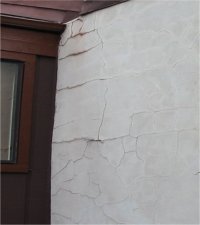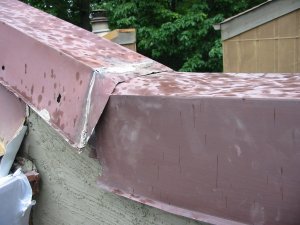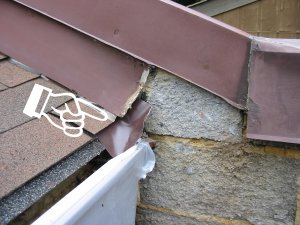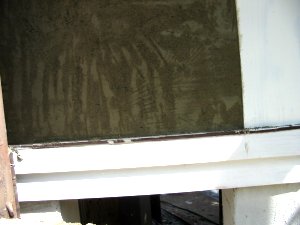Point 9 of my 12 point list of methods for reducing cracking in
portland cement stucco
| Point nine - Protecting the work after it's finished. |
| Protecting the work after it's finished is out of the
control of the plasterer. All I can do is insist that things like roof caps are done, but I don't put them on. The material we work with lasts pretty much forever, as long as water doesn't run behind the wall. This example of a block wall is bad enough. Wood framed walls require more attention. If the wall isn't capped immediately after the stucco is finished, water infiltration can cause warping of the framing lumber, cracking the stucco. 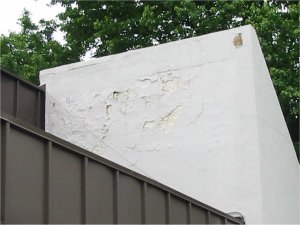 Badly spalled block and stucco wall will have a new roof cap when we replace the stucco. |
 |
Why wait until it looks like this? |
